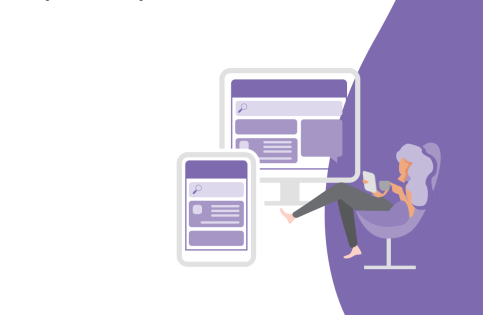Service Desk Chatbots are gaining traction in organizations that want the economies of scale that autonomous digital interaction can deliver.
Why? A chatbot can look after 30% of a service desk’s tickets, giving human agents more time to focus on solving the big challenges that make a real difference.
But a successful chatbot implementation relies on the right approach. As a new technology, many of the requirements can only be discovered through iteration and feedback. The traditional waterfall project model doesn’t fit—you need to be agile to succeed.
Part of our Omnichannel ITSM series.
Agile Chatbot Implementation
Using the traditional waterfall approach to deploy a service desk chatbot carries risks:
- The risk of investing a lot of time and money in a project with a very long lead-time—meaning it could be months before you see any return on investment.
- The risk that it fails to hit the mark and resonate with IT customers, causing low adoption rates and low ROI. With no early-value-early-feedback loops, there’s no validation from your customers around whether the chatbot does what they expect it to do.
- A chatbot isn’t as ‘one-and-done’ project. Like everything else in ITSM, it should be the subject of continual improvement. The waterfall model, by nature, encourages a ‘fire and forget’ attitude: when the waterfall process ends, the implementation team disbands and focus goes elsewhere, leaving the chatbot to wither on the vine.
For a chatbot implementation, it’s essential to take an agile approach: deploy a Minimum Viable Product (MVP) chatbot so that early value is delivered and validated by your customers. Then you can iterate to extend the capabilities of your chatbot— driving up ROI over time. Luckily, it’s easy to start small and grow quickly—especially if your chatbot is hooked in to a unified ITSM platform.
What Does an MVP Chatbot Look like?
An MVP chatbot is one which is useful to your customers in helping them solve some of their most frequent issues in a way that is better and faster than calling or emailing the service desk.
To make it useful, you need to identify the top things that customers would like a chatbot to do for them—and focus on getting a handful of priority case types right before you broaden the scope. It’s shouldn’t be about what’s going to save your service desk the most time and money. You have to take a customer-oriented approach if you want to drive mainstream adoption and realize the transformational value of AI-driven ITSM automation.
Of course, every organization is different. The profile of incidents, inquiries and requests that come into a service desk is different. You will need to do some analysis to find out what an MVP chatbot should look like for your organization. A service desk chatbot implementation should be founded on data, not speculation.
You can get a picture of service desk demand by analysing incident data in your service desk tool to find the most frequent issues and assess how suitable they are for the chatbot channel.
For example, password reset is a quick win that makes the list for many MVP chatbots. It’s very easy for a bot to identify a password reset request, and the response is usually as simple as sharing a link to your password reset tool. However, one capability is not enough for an MVP. Your chatbot should be able to deal with a small range of issues in the first instance.
It is important to remember that the analysis of what your MVP chatbot needs to look like shouldn’t happen behind closed doors within IT. Once you have a data-driven picture of service desk demands, it’s time for you to validate your proposal for MVP chatbot capabilities with your IT customers—before you deploy any technology. Business stakeholders usually want to make additions and adjust the priorities. At this stage, it is cheap to pivot. Once you start getting hands-on with the technology, the cost of change goes up.
Maintain Engagement With Customers Throughout
There’s a reason why Engagement is a key activity in the new ITIL 4 Service Value Chain—feedback from customers is critical to delivering the right chatbot capabilities in a changing environment.
But engagement is also a critical adoption driver.
You will need to communicate with your customers to let them know when you are launching the chatbot channel, and what it can do for them. The why is important. Answer the question “What’s in it for me?” in your communications so that IT customers can see the benefits that they will experience (choice of channels, digital interaction, no waiting in a call queue), not just the broad benefits it will bring to your organization (cost reduction, streamlined operations, reduced human error).
If you combine customer engagement and agile iteration, it’s so much easier to deliver the right chatbot MPV faster —to get higher adoption, higher customer satisfaction, and more ROI.
Want to find out more? Watch the webinar now.
Get Started
 Contact us for a no-obligation chat with a consultant
Contact us for a no-obligation chat with a consultant
 Sign-up for blog notifications to make sure you don’t miss out
Sign-up for blog notifications to make sure you don’t miss out
More About Omnichannel ITSM
- Why You Need an Omnichannel Service Desk
- How Omnichannel ITSM Improves Quality, Speed, and Cost
- Multichannel vs Omnichannel Support: What’s the Difference?
- Omnichannel Service Desk Strategy: 3 Things You Need to Know
- Multichannel / Omnichannel Service Desk Adoption
- How to Make Omnichannel ITSM Work
- How Advanced Service Desk Chatbots Work
